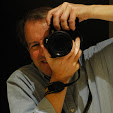28.2.09
Evolutionary reason for art ...
17.2.09
Marie Lorenz
"The last bit of Earth unclaimed by any nation-state was eaten up in 1899. Ours is the first century without terra incognita, without a frontier…We are looking for spaces (geographic, social, cultural, imaginary) with potential to flower as autonomous zones" from 'The Temporary Autonomous Zone' Peter Lambourn Wilson
"Running water is more than a passive guide, it represents an invitation for a free ride into terra incognita." from 'Early Man and the Ocean' Thor Heyerdahl
"The natural element for industry, animating its outward movement, is the sea. Since the passion for gain involves risk, industry though bent on gain yet lifts itself above it; instead of remaining rooted to the soil and the limited circle of civil life with its pleasures and desires, it embraces the element of flux, danger, and destruction." from 'Philosophy of Right' Georg Wilhelm Friedrich Hegel
My artwork combines psycho-geographic exploration with highly crafted, material forms. I use boats and navigation in my artwork to create an uncertain space. My belief is that uncertainty brings about a heightened awareness of place. When we feel unstable we see more. In my very first boat projects in the canals around Providence, Rhode Island, I was struck by the unique perspective that navigating a city waterway allows. I saw the city from below street level. The people and cars were gone. The strangely empty city allowed for an unusual encounter with architecture and structure.
In my ongoing project called The Tide and Current Taxi, I ferry people throughout New York in a boat that I made. I study tidal charts of the harbor and use the tidal currents and river currents to push the boat all throughout New York City. The act of floating through adds a specific presence to ones own observation. The viewer maintains an awareness of their own balance and form as they absorb the details in their surrounding. This kind of observation creates something new out of something familiar. This is an attempt to 'un-know' the city. Furthermore, my project looks for unoccupied edges of social control– we float freely through the highly gridded city, in search of understanding, or just 'in search of'. I continually insist upon re-exploring the metropolis. The coastline of New York City is constantly changing and developing; my projects navigate and record this transitional state.
I am currently working in Rome on a sailboat that I will use to sail the coast of Italy this Spring. I think of the boat as a kind of drawing tool. It is carved with relief images, like building blocks that I can use to make rubbings of the landscape. It has drawers full of drawing utensils and foldout easels. The deck of the boat is a drawing desk. Similar to the photoblog that I keep about the Tide and Current Taxi, this boat in its own form will allow me to keep a careful record of my exploration as it unfolds.
14.2.09
Amazon.com: Empire, Barbarism, and Civilisation: Captain Cook, William Hodges and the Return to the Pacific: Harriet Guest: Books
Source:
James Cook
Cook stayed nearly a month, charting the waters and making friends. On first impression he thought Nuu-chal-nuth people 'mild and inoffensive'-until their trading savvy revealed itself. 'These people got a greater medley and variety of things from us than any other,' he noted. By the time Cook set sail, his ship had been stripped of virtually all surplus metal: copper kettles, tin tea canisters, brass candlesticks and bureau fittings, even the buttons off officers' uniforms. In return, Cook filled his hold with native artifacts-and a fortune in sea otter pelts.
The success of Cook's voyage ignited a worldwide frinzy of excitement. Ships from England, Spain, Portugal, France, and the soon-to-be-independent United States swarmed into the region. Profits were unbelievably high. One trader from New England arrived in 1785 and swapped some cheap metal items for 560 pelts, which commanded $20,000 in the China market....American ships alone gathered some 350,000 sea otter pelts altogether, for which native suppliers received an estimated $7 million worth of trade goods.
# In the end there was plenty for everyone, native and foreigner alike. Among the Haida, prominent families were amassing fortunes in coppers, blankets, firearms, and other valuable items. Down the coast it was the same. White traders coming into the region often preferred to deal with one or two powerful families, who became exceptionally wealthy as a result."
Source:
2.2.09
The Macintosh Biblioblog: Special Key Symbols
The Macintosh Biblioblog: Special Key Symbols from the blog: "All things Macintosh for biblical scholarship and ministry."
1.2.09
Can You Choose Your Reincarnated Successor? - NYTimes.com
But a darker vision of Tibet’s future is easily divined. This Dalai Lama dies and his successor is young and inexperienced and holds no sway in the chambers of the powerful. Slowly, ineluctably, the Tibetans become just another of the globe’s landless peoples lost in the shadow of a rising superpower."
Source: http://tinyurl.com/dfalpg
